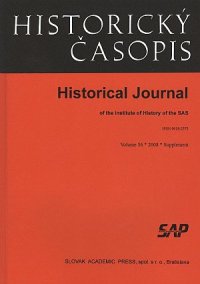K pokusu o erigovanie biskupstva na Spiši v polovici 14. storočia
On an attempt to create a Bishopric of Spiš in the mid 14th century
Author(s): Blanka BrezovákováSubject(s): History
Published by: SAV - Slovenská akadémia vied - Historický ústav SAV
Keywords: History; Slovakia; Spiš; Arch-deaconry; Provostry; Bishopric; suplica; beneficium
Summary/Abstract: The provostry of Spiš, together with two other provostries, those of Bratislava and Sibin (Sibiu in Transylvania), had a special position in the ecclesiastical administration of the Kingdom of Hungary. These three ecclesiastical institutions practically represented a level between a bishopric and an arch-deaconry. They held quasi-episcopal powers. All three ecclesiastical structures served frontier regions containing a numerical predominance of German “guest“ inhabitants. However, the provostry of Spiš also showed some differences from the other two provostries. There are various documents, which show that Spiš was one of the territories of the state, where a member of the royal family ruled for longer or shorter periods. Probably this is where we should seek the reasons for the attempt to change the provostry of Spiš with its quasi-episcopal powers into a regular bishopric of Spiš. The attempt to establish the bishopric by King Louis I and his mother Elizabeth is supported by a document in the form of a papal letter, which, appealing to a royal suplica from 1348, orders selected Hungarian ecclesiastical dignitaries to investigate the request. Although there was not a positive reply to the request and the attempt was not successful, the whole case represents a notable example of the functioning of cooperation between the monarch, the Hungarian Church and Papal Curia in questions of ecclesiastical administration in the 14th century.
Journal: Historický časopis
- Issue Year: 2009
- Issue No: 03
- Page Range: 415-442
- Page Count: 28
- Language: Slovak

